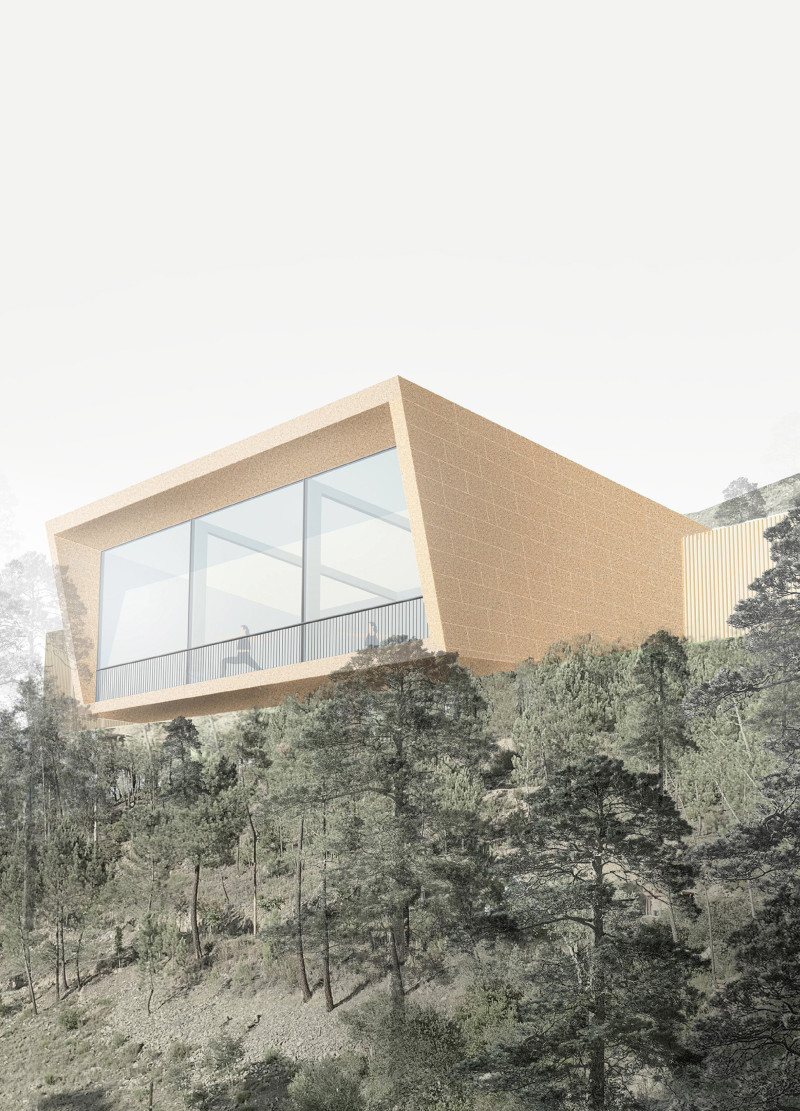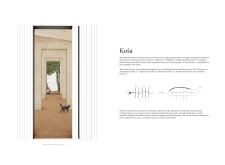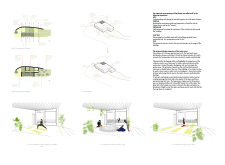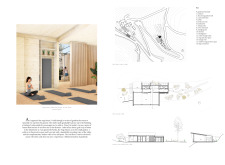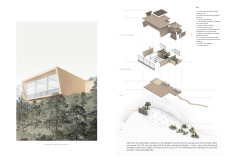5 key facts about this project
The design integrates multiple zones designated for various functions, including practice spaces, reflection gardens, utility areas, and a welcoming entrance. These elements are thoughtfully arranged to promote a seamless flow throughout the space, encouraging an experience that transitions individuals from the outside world to a calm and focused interior environment. Each area reflects specific aspects of yogic philosophy, particularly the concept of the five koshas, which represent layers of consciousness. This philosophical underpinning informs the spatial organization and material choices throughout the project.
Unique Design Approaches in the Kośa Yoga House
One distinguishing feature of the Kośa Yoga House is its commitment to sustainability through the strategic selection of materials. The primary structure is composed of cross-laminated timber (CLT), which provides durability while ensuring energy efficiency. Additionally, cork flooring is utilized in practice spaces, adding tactile comfort and enhancing the overall sensory experience. Finishes including bamboo and plywood further contribute to the inviting atmosphere, reflecting a conscious effort to align with ecological design principles.
The use of large glazed areas throughout the structure facilitates natural lighting, fostering a continuous connection to the surrounding forest. This design choice is purposeful, allowing users to remain aware of their natural environment while practicing yoga, enhancing the overall mind-body connection. Furthermore, the layout creates flexibility in usage, accommodating both group and individual practices, making it suitable for varied wellness activities.
Functional Spaces and User Experience
The Kośa Yoga House is strategically divided into distinct yet interconnected spaces, each serving a specific purpose that fosters user engagement. The entrance area provides a smooth transition from the outside world, setting the stage for a tranquil visitor experience. Practice areas are designed to be open and adaptable, catering to varying group sizes while ensuring an intimate environment conducive to healing and reflection.
Reflection gardens surround the structure, designed to encourage contemplation and interaction with the natural landscape. Utility areas are integrated seamlessly into the overall layout, ensuring functionality without detracting from the serene aesthetic of the yoga house. Each element of the design emphasizes ease of access, creating an environment that is welcoming and supportive of the user's wellness journey.
In summary, the Kośa Yoga House exemplifies a thoughtful architectural approach that integrates mindfulness and sustainability within a retreat environment. To gain deeper insights into the architectural plans, architectural sections, and overall design ideas of this project, readers are encouraged to explore the project presentation in detail, unveiling the extensive considerations that went into its development.


